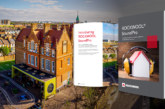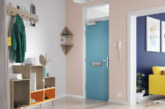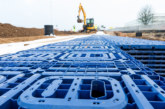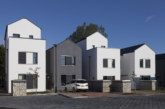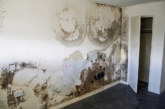Effectively managing noise pollution is an increasingly important concern for those designing buildings. In recent years, research has established the link between sound disturbance and poor health, such as the findings from the World Health Organisation. David Barker explores the importance of incorporating acoustic drainage solutions within public buildings and social housing.
Excuse the pun, but noise pollution is something of a silent killer. Disruptive sounds trigger stress responders in the body, which can have serious follow-on effects. In fact, increased stress levels have been linked to heart disease, as well as high blood pressure and strokes. It’s a nationwide problem, affecting those living in both cities and rural areas. To this end, even small levels of noise pollution can become problematic and increasingly affect the whole population, regardless of where someone lives.
To prevent noise pollution, it’s important to understand what causes it in the first place. Any object in motion makes a noise, transmitting its vibrations in the form of pressure. As a result, unwanted noise can seep into homes in a number of ways, both internally and externally. This can particularly affect built-up, urban areas and high-rise buildings, such as social housing.
As well as densely populated areas encountering increased levels of nuisance noise from the outside world, high-rise and multi-occupancy buildings will also likely have complex domestic plumbing and drainage systems, which in turn can lead to the generation of further internal noise around the clock.
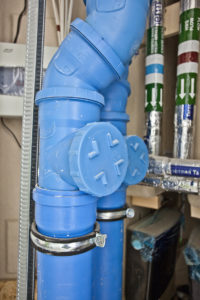
Unwanted internal noise
Many people do not consider the effects of unwanted internal noise; however, they can be just as problematic as noise from external sources. Internal noise is often the result of poor acoustic management and, in particular, drainage systems. With multi-occupancy buildings containing a large amount of plumbing fixtures and pipework, these drainage systems can understandably be very noisy; with gurgling pipes, the audible sounds of toilets flushing and the sounds of wastewater passing through the building. Thankfully, there are a number of modern, acoustic drainage systems that have been designed to ensure low-noise environments.
For example, Marley Plumbing & Drainage’s dBlue Acoustic Soil range is purpose-designed to reduce sound in drainage systems and offers outstanding sound insulation properties, lowering noise and acoustic vibrations to a level of 16dB at 4l/s. Products from the range are suitable for use in multi-occupancy applications, being quick and easy to install. They also significantly reduce the sounds of wastewater flowing through the system. With a secure push-fit jointing system, the dBlue range can help to facilitate the quick and hygienic removal of sanitary wastewater.
Specifying and installing layered plastic drainage pipework can offer the most modern method of internal sound insulation, helping to create a more comfortable and pleasant living environment for tenants. Often, each of the layers will have an individual function. To demonstrate, the external layer of Marley’s dBlue pipe is created from polypropylene and resistant to external tensions and atmospheric factors. The internal layer is manufactured from the same material and resistant to temperatures of above 90˚C. Finally, a middle layer is made from a modified polypropylene, which provides high stiffness and excellent noise reduction.
Noise reduction
In practice, triple-layered plastic drainage pipes work by absorbing sound waves and reflecting them inwards, limiting airborne and structure-borne noise. Airborne noise is reduced when sound waves from running wastewater inside the pipe come into contact with the triple-layer structure.
Similarly, structure-borne noise is reduced by limiting the acoustic resonance that travels through a system of pipe brackets to the building’s structure. As such, it is essential that the pipe brackets installed to the wall be of a high quality. Marley Plumbing & Drainage’s Phonoklip patented acoustic body bracket for example encompasses a specific body section that works to reduce the generation of structure-borne sound. When acoustically tested according to the European standard EN 14366, the dBlue system, as a whole, was shown to dramatically reduce noise levels in everyday surroundings.
When specifying a drainage system for social housing, or indeed any occupied building, local authorities should look to install solutions that are specifically designed to reduce acoustic disturbances, ensuring that residents are provided with a comfortable place to live, free of nuisance noise. It is also vital that the overall system is designed and installed in a manner that further aids sound reduction. By liaising with an experienced and reputable manufacturer, those working in the sector can receive technical and specification guidance, ensuring a high-quality installation.
David Barker is Head of Category Management at www.marleypd.co.ukMarley Plumbing & Drainage


